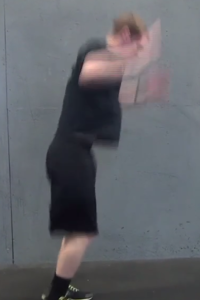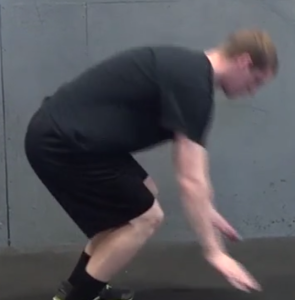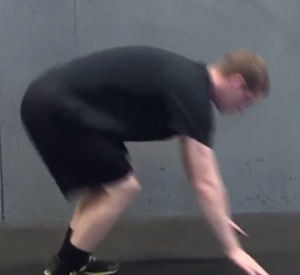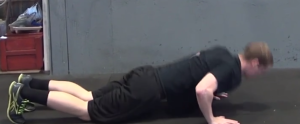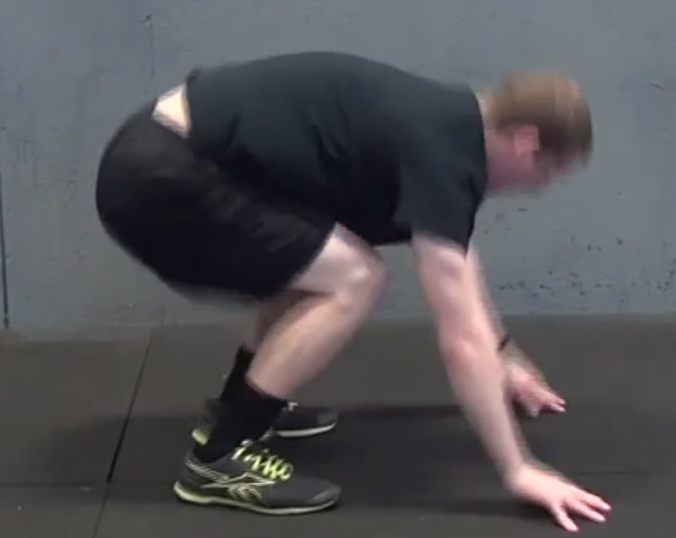Do you have wrist pain during the front squat? Is it stopping you from adding more weight to the bar, completing other exercises proceeding the front squat, and even affecting you in other lifts like the Squat clean? If it is, this blog post will insight you on the potential causes of your pain, and how to self-diagnose yourself so that you can finally find out where the pain is rooted. Knowing this will be the first step to finally fixing your nagging wrists.
Wrist pain during front squats or any other “rack position” movement can really set you back in the CrossFit world. Casual CrossFitters will find that their overall fitness improvements will be hindered, and Competitive CrossFitters won’t be able to place nearly as high in competitions. The pain can really slow you down, and even cause injury elsewhere in the body!
It’s always important to get to the source of the problem – so here are the most common injuries or problems you may have going on that are causing your wrist pain.
1. Prior Wrist Injury (Tendinitis, Sprain, or Fracture)
Obviously, if you have previously injured your wrist, whether that be in the 2 weeks ago or 2 years ago, the wrist is a funky joint and can leave you with pain during this movement. Here’s how you can narrow it down to see if you have any of these injuries.
Wrist Sprain – This can be caused by hitting, twisting, or falling on your wrist. If the pain only comes when you move your wrist, and you’re certain your wrist isn’t broken, you might have wrist sprain.
Wrist Tendinitis – If you’re pain comes during or after multiple reps of burpees, you may have wrist tendinitis. Overuse and Overload are both common causes of tendinitis. (These can both be due to “weak point”, and can be fixed by strengthening and stretching of the correct muscles.)
Broken Wrist – If you twisted, hit, or fell on your wrist, and the shape of it has changed, you’ll want get it checked right away. It may be broken.
2. Incorrect Form
A lot of the time, positioning the bar in the wrong place, or gripping the bar the wrong way will put much more stress on the wrists than are needed. Even if you have flexibility or mobility issues, there are still some adjustments you can make to help you out.. By correcting your form (if it was already incorrect), you can sometimes instantly reduce or get rid of your wrist pain.
3. Flexibility or Mobility Issues in your Wrists, Triceps, Shoulders, and Upper Back
Sometimes incorrect form is actually caused by flexibility or mobility issues in these three areas. There are TONS of exercises you can do to improve your flexibility and mobility, so over time you’ll be able to move yourself into the correct range of motion for this movement.
4. Sensitive Ulnar Nerve
There is a nerve that runs along the inside of your forearm and down the wrist that can cause you pain if it is compressed too much. You can test to see if you have this problem by putting your arms in the front squat position (bent elbows and palms facing the ceiling) and rest your fingertips on your shoulder. Now take one of your hands, and pull back slightly on your fingers. Do you feel any sharp pains there running down your forearm? If you do, you may want to get that checked out by a healthcare professional.
Once you finally figure out what you think is causing your wrist pain from the tests above, you can do proper research, or contact a medical professional (recommended) to design a plan that will help you move forward. Although this blog post did teach you how to self-diagnose a potential wrist injury, it’s always important to get a second opinion from an expert.

